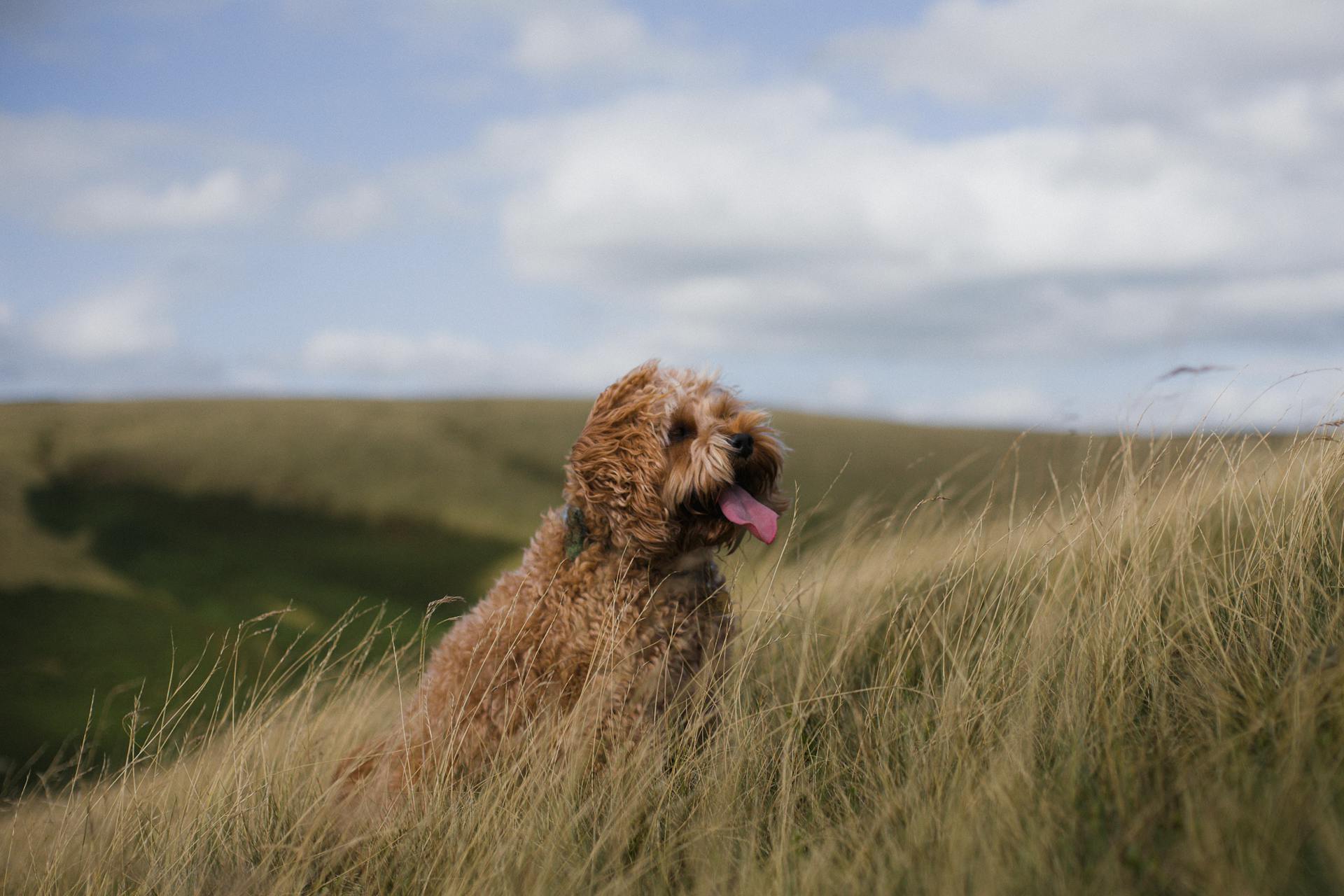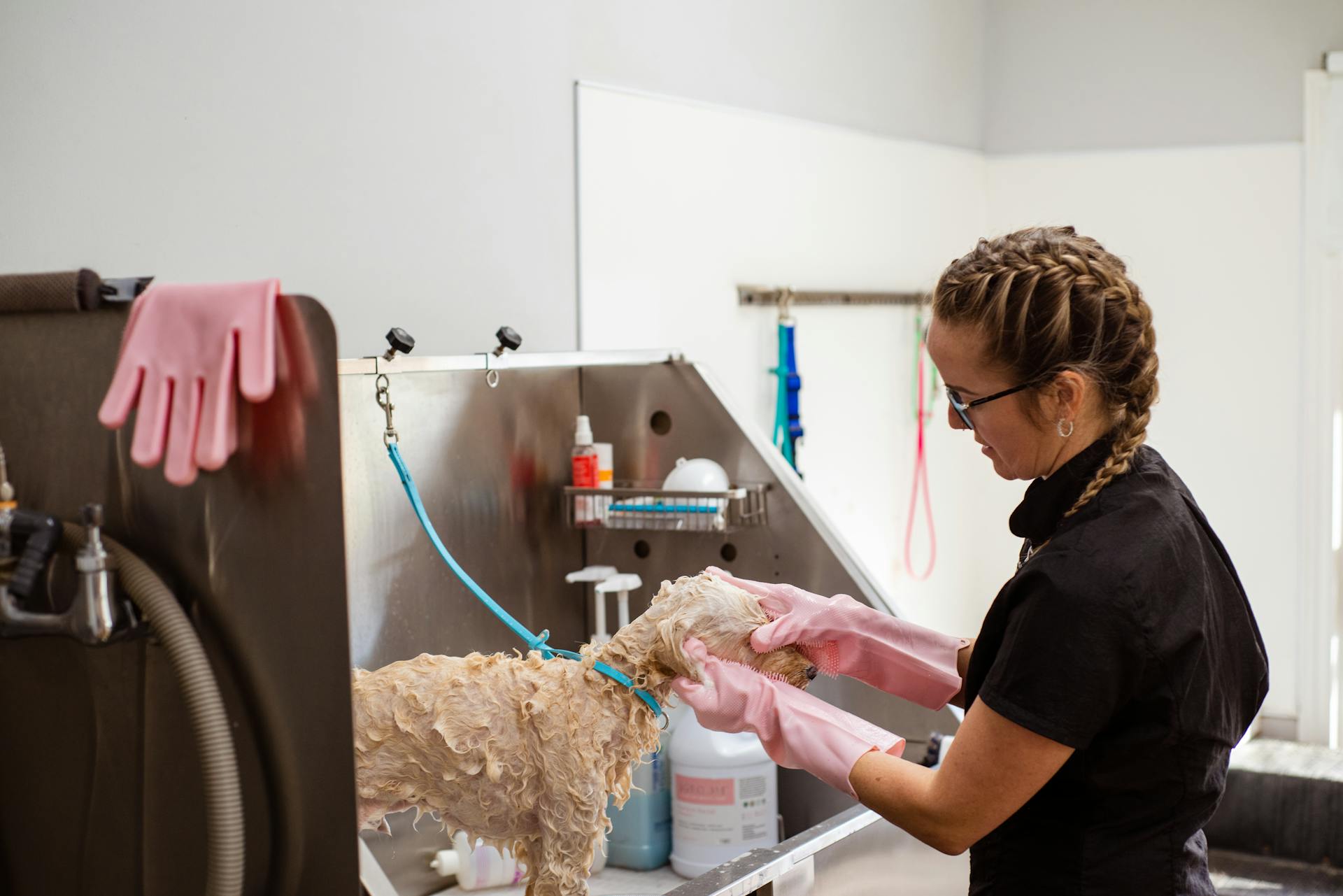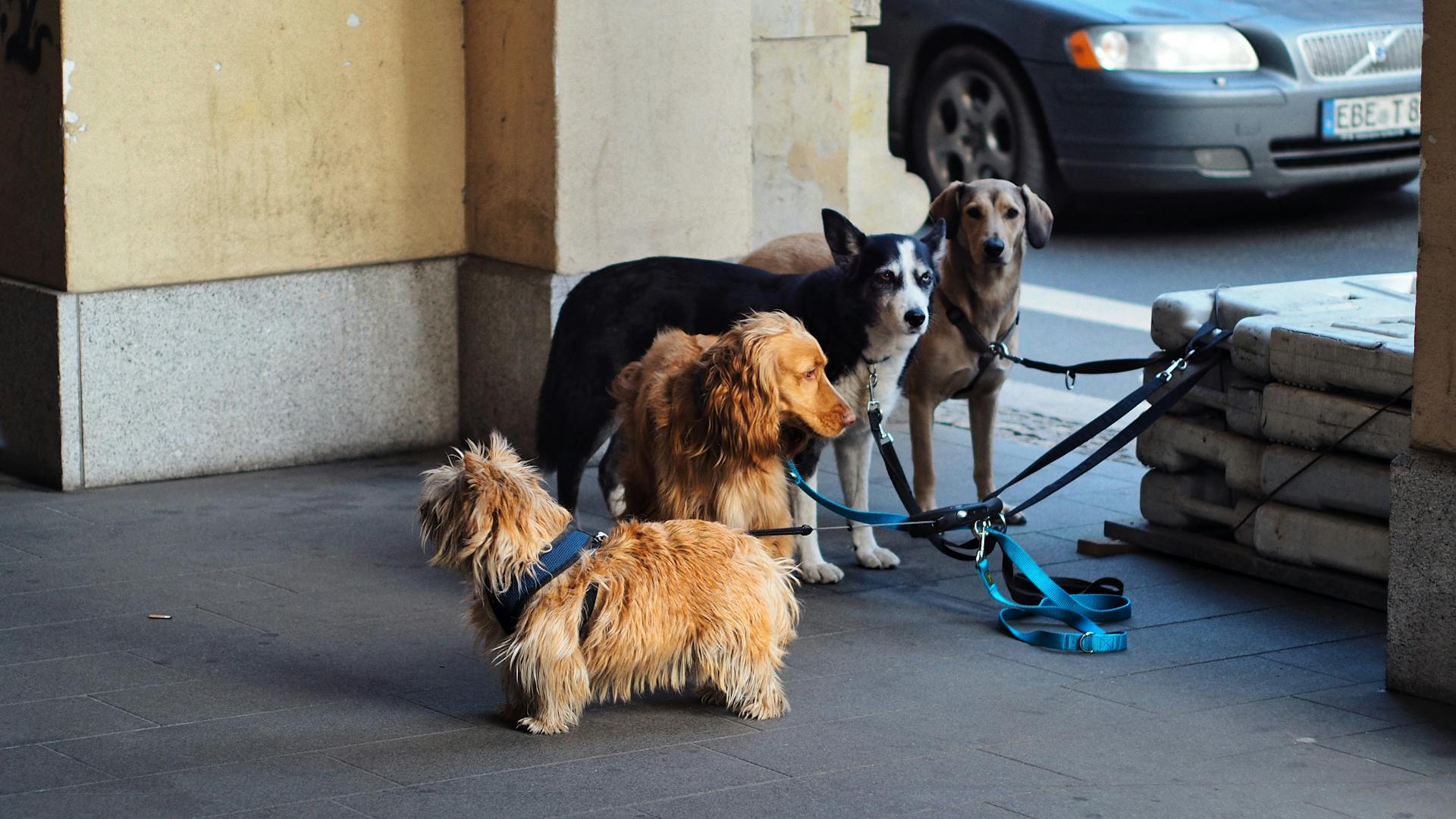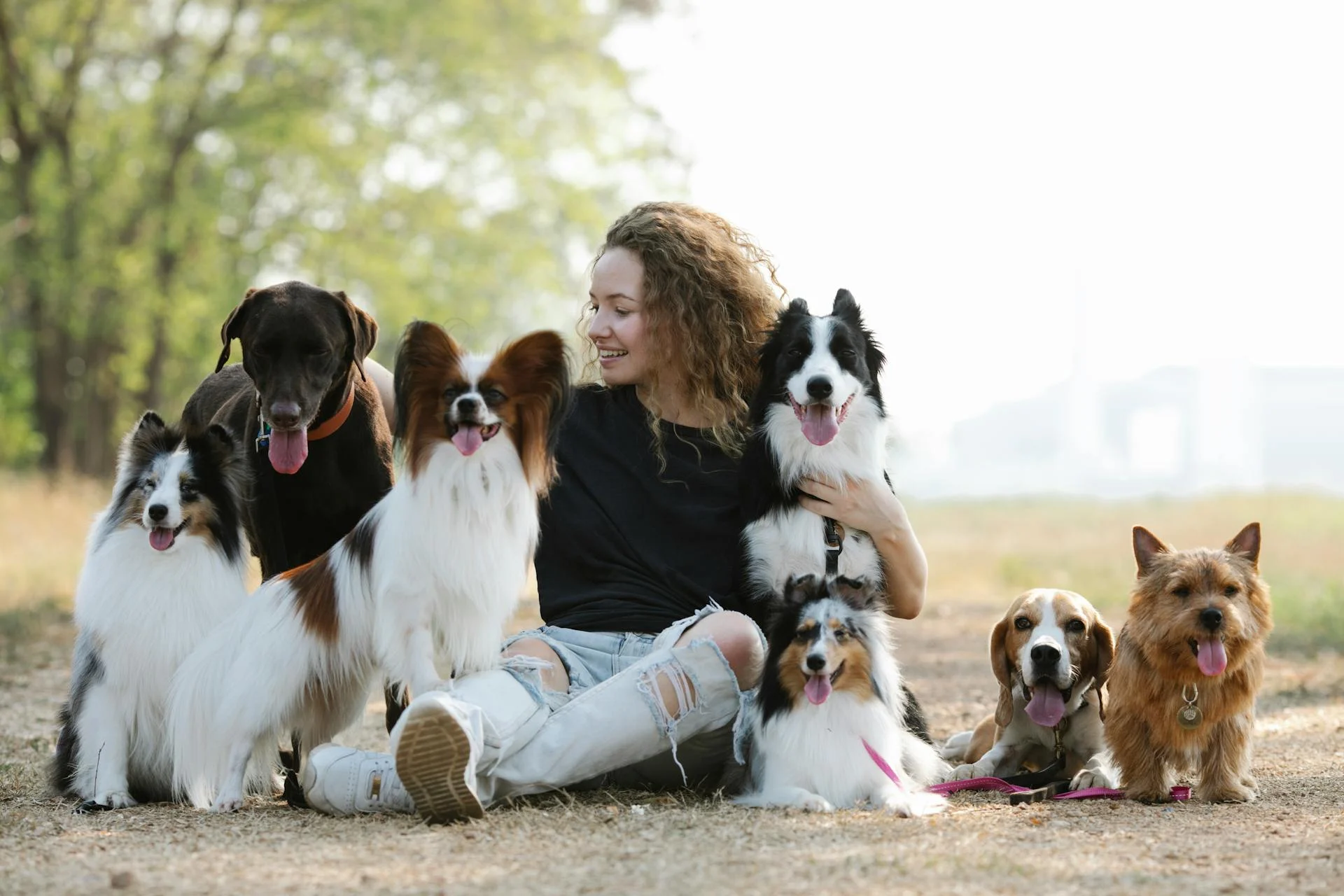
Labradors are known for their love of water, but their first bath can be a daunting experience for new owners. This is because Labradors have a thick double coat that requires special care during their first bath.
Before you start, it's essential to brush your Labrador thoroughly to prevent matting and tangling of their fur. You can use a slicker brush or a pin brush for this purpose, as they are gentle on their skin.
Labradors typically require a bath every 2-3 months, but this may vary depending on their lifestyle and exposure to dirt and debris.
Curious to learn more? Check out: 1st Cloned Dog
Preparation
Before you start bathing your Labrador, it's essential to prepare them for a comfortable experience. Place cotton balls in your dog's ears to keep water out of the ear canal. This simple step can prevent any potential discomfort or ear infections.
To ensure a smooth bath, thoroughly comb your Labrador's coat to remove any tangles and mats. If you wait until the fur is wet, it'll be impossible to comb through, and you can even cause matting.
What You'll Need
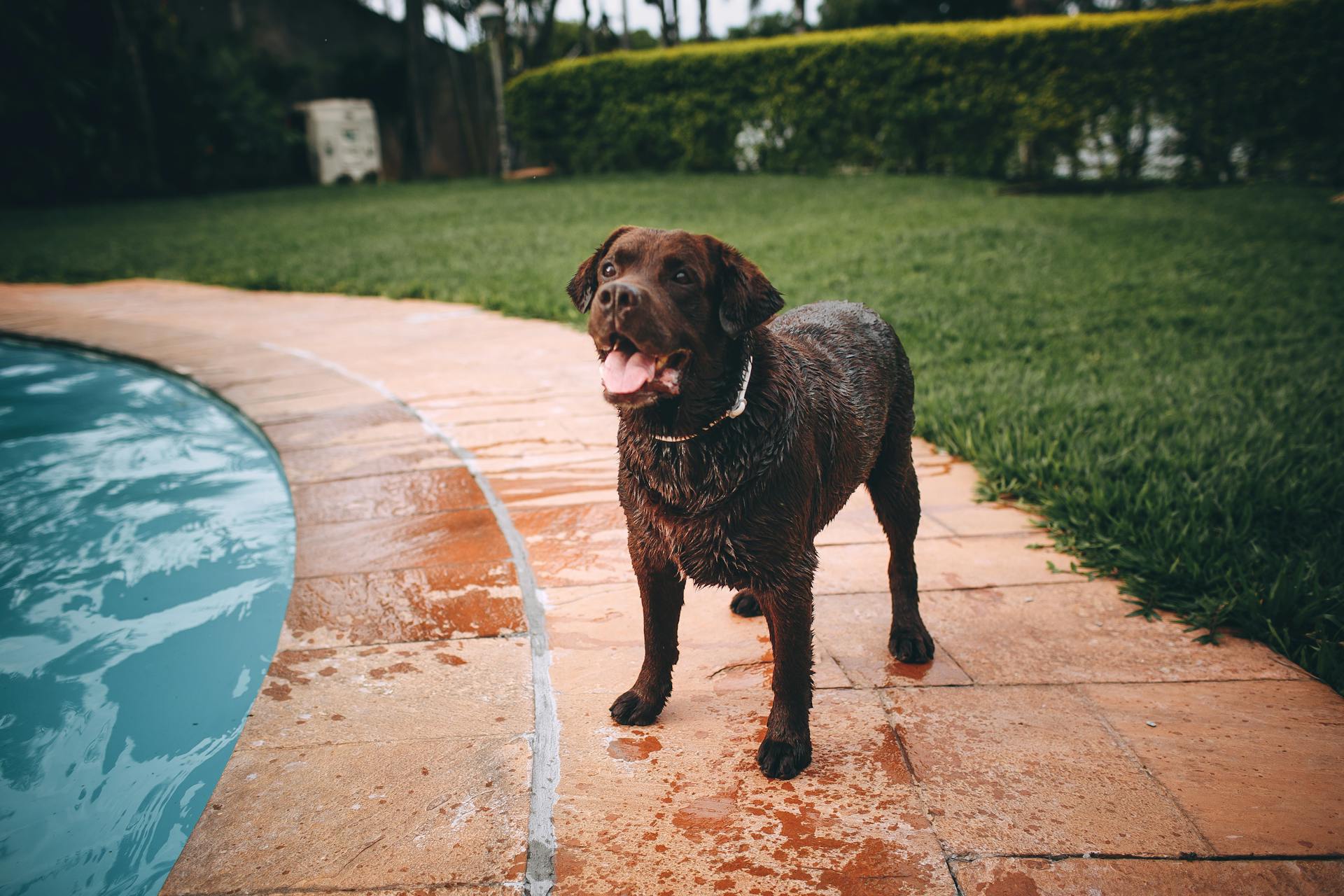
To bathe your Labrador Retriever effectively, you'll need a few essential items. You'll want a good quality shampoo, conditioner, and possibly a flea shampoo or tea tree oil depending on your dog's needs.
Cotton balls are also a must-have to protect your dog's ears from water. You'll need them to keep water from getting into the ear canal.
A comb is crucial for removing tangles and mats from your puppy's coat before getting them wet. This will prevent matting and make the bathing process much easier.
You'll also need a towel for drying your dog after the bath, and possibly a simple shed shampoo and treatment for the spring and fall shedding season.
A fresh viewpoint: How Often Can I Use Flea Shampoo on My Dog
At What Age Can You Bathe Your Puppy?
You can bathe your puppy when they're at least eight weeks old, as recommended by the American Kennel Club. This is because young puppies can't regulate their body temperature effectively and could get chilled if they're bathed too soon.
It's essential to wait until your puppy is eight weeks old before giving them their first bath. This allows them to develop enough to withstand the temperature changes that come with bathing.
You should never use human shampoo on your puppy, as it's too harsh for their sensitive skin. Instead, use a high-quality dog-specific shampoo that's formulated with their skin in mind.
Using human shampoo on your puppy can cause more harm than good, so it's best to stick with a shampoo specifically designed for dogs.
Take a look at this: When Do Labradors Lose Their Puppy Teeth
Bathing Your Puppy
You'll want to use a high-quality dog-specific shampoo on your Labrador puppy's first bath, as human shampoo is too harsh for their sensitive skin.
Earthbath Hypo-Allergenic Shampoo is a great option, as it's formulated with gentle ingredients and is safe to use on puppies over six weeks of age.
Make sure to wet your puppy thoroughly with lukewarm water before applying the shampoo, as a Labrador's coat is naturally water-resistant.
For your interest: Labrador Husky Puppy
Bath time can be a chore, but starting early will help your puppy become more comfortable with the process.
If you begin bathing your puppy at a young age, it will slowly become accustomed to bath time, and you can even make it an enjoyable experience by using positive reinforcement and making it a fun time for both of you.
The Bathing Process
Before you start bathing your Labrador, make sure to place cotton balls in their ears to keep water from getting in. This is a simple step that can prevent a lot of discomfort for your dog.
It's essential to use a high-quality dog-specific shampoo that's formulated for your dog's sensitive skin, such as Earthbath Hypo-Allergenic Shampoo. This type of shampoo is specifically designed to be gentle on your dog's skin.
Begin by wetting your dog thoroughly with lukewarm water, making sure to work the water in as a Labrador's coat is naturally water-resistant.
For your interest: Dry Skin on Labradors
To create a lather, spread a gentle shampoo throughout the coat and work it into a rich foam. Be sure not to get any shampoo in your dog's eyes, and use a wet washcloth with tearless shampoo to wash their face.
Rinse your dog's coat thoroughly until the water runs clean and no soapy residue is visible. You may need to rinse a few times to get all the soap out.
Apply shampoo to your dog's coat before getting their fur wet for better cleaning, and use a soft rubber brush like the KONG Zoom Groom to work the shampoo through thick fur. Don't forget to hand scrub their paws, stomach, armpits, and tail for a thorough clean.
You might enjoy: Do Chihuahuas Have Hair or Fur
Grooming and Drying
Grooming and drying your Labrador after their first bath is a crucial step to prevent skin irritation and matting.
Before getting your Labrador wet, thoroughly comb the coat to remove any tangles and mats, as wet fur is impossible to comb through.
Towel dry your dog vigorously, but gently, using more than one towel if necessary. If you have access to a high-velocity dryer, this is a great time to use it, as it helps remove water and loose hair.
A thorough towel dry is usually all that's needed for dogs with smooth single-layer coats, but for dogs with double coats or hair-like coats, blow-drying is best to ensure they're completely dry.
Curious to learn more? Check out: Do Collies Shed a Lot
Step 4
When bathing your puppy, it's essential to be gentle and careful not to startle them.
Rather than using a shower attachment, use a cup to slowly pour water over your puppy, making the experience as calm and enjoyable as possible.
Be extremely careful not to get water in your puppy's eyes or ears, as this can be very painful and even cause infections.
Use a sponge to wet your puppy's head, and take your time to make sure they're comfortable with the sensation.
Brush
Brushing is crucial for detangling and de-shedding, and it's best to use a comb or brush suitable for your dog's coat type.
You should brush your dog before getting them in the tub to remove excess fur that prevents the shampoo from penetrating all the way down to the skin. This step is also when you can find any mats that need detangling or trimming.
For thick double-coated breeds, combining brushing with a pre-bath blow out with a professional grooming dryer can remove excess fur more easily.
You might enjoy: Do Labradors Have Hair or Fur
Drying
Drying is a crucial step in the grooming process. It's essential to remove excess moisture from your dog's coat to prevent skin issues and matting.
Towel drying is a great way to start, as it's gentle and effective. Vigorously towel dry your dog, using multiple towels if needed.
High-velocity dryers can be a game-changer, especially for dogs with loose hair. They not only dry your dog quickly but also remove loose hair.
Discover more: Curly Hair Cavapoo
If you don't have a high-velocity dryer, a human hair dryer on the cool setting can be a good alternative. Just be sure to work your way around your dog, drying each section until they're completely dry.
Dogs with double coats or hair-like coats may require blow-drying to ensure they're completely dry. This is especially important to prevent skin issues and matting.
When drying your dog's face and head, it's best to towel dry first. This allows their face to air dry and prevents irritation.
Using a Happy Hoodie while blow-drying can be beneficial, as it muffles the sound of the dryer and protects your dog's hearing. This can also have a calming effect on many dogs.
Recommended read: Do Labradors Need Winter Coats
Sources
- https://www.earthbath.com/blogs/earthbath-blog/puppy-first-bath
- https://espree.com/BreedProfiler/labrador-retriever-grooming-bathing-and-care
- https://www.animalbehaviorcollege.com/blog/animal-career-advice/grooming/labrador-retriever-grooming/
- https://www.snowypineswhitelabs.com/blog/how-often-should-you-bathe-a-lab/
- https://www.preventivevet.com/dogs/bathing-a-dog-at-home
Featured Images: pexels.com
